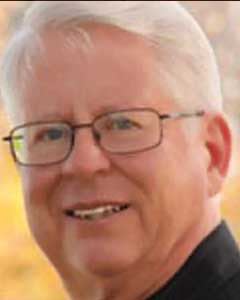Some have criticized the Lord of the Rings trilogy and its screen adaptation for claiming to be an adult myth and a portrayal of real life, while displaying a glaring absence of women. All the main characters, male warriors to be sure, seem lacking in awareness that they are sexual beings.
While the cosmic battle between good and evil intensifies during this second of three segments of the Rings cycle and while wizardry is to be found in abundance, the story line seems strangely lacking in any clearly defined religious beliefs or practices.
Tolkien, a devout Christian and Oxford don, created Middle Earth as a complete, self-contained world with its own history. He was sensitive to the charge that this unique universe lacked eros and faith. He maintained to the end that Rings was “fundamentally religious and Catholic work.”
My recommendation? Watch The Two Towers with a child-like imagination and a thoughtful spirit. That will serve to douse any sticking criticism of Tolkien and his efforts. The movie offers something worthwhile for any viewer. In spite of the interminable violence and some downright scary scenes, children and the more faint of heart too can learn a great deal from this heroic tale.
This is much more than dramatically engaging and digitally sophisticated entertainment. It is indeed not an allegory but a grand, over-arching narrative. It helps to explain how, through difficult struggles, focused individuals can come to better understand their own experience and their vocation. We can all, at different life stages, grow from the exchange of what we bring to and what we take from this story.
Frodo (Elijah Wood), our wide-eyed hero, and his equally naive hobbit colleagues continue their trek to Mordor where he has been mandated to dispose of his inherited evil ring. Frodo and his mix of human, elfin, dwarfish and forest friends find themselves stumbling into one crisis after another, battling a succession of enemies, all of whom serve as willing acolytes to the dark lord Sauron and his evil wizard ally Sarumen (Christopher Lee). The good wizard Gandalf (Ian McKellen), feared lost in the first episode, makes a surprise and welcome reappearance. He brings hope and reassurance to the fragile fellowship chronically dangling on the precipice of division and disintegration.
Galdriel (Cate Blanchett), fair elfin queen, again materializes to inspire and recommission the young hobbit. Arwen (Liv Tyler), another elfen beauty obviously in love with the good soldier Aragon (Viggo Mortensen), appears in his dreams. He is inclined to reciprocate these warm advances, except that his fantasies of her keep being interrupted by a call to arms after one more invasion of evil orcs.
The Two Towers
New Line Productions
Directed by Peter Jackson
Written by Philippa Boyens, Peter Jackson, Stephen Sinclair, and Frances Walsh
Starring Elijah Wood, Ian McKellen, Viggo Mortensen, Christopher Lee, Cate Blanchett, Liv Tyler, Sean Astin.
Woman strength is powerfully present in this tale. The dearth of female stars in this drama should not be taken to mean an absence of profound feminine influence. Quite obviously for Tolkien and director Peter Jackson, less is more.
The most intriguing character of the movie is Gollum/Smeagol. He is an ingenious computer creation, a blend of famished baby and dying senior citizen. The schizophrenic nature of his character conveys authenticity and humanness. He conducts endless debates within himself, reflecting the good and evil sides of his personality at war.
The hobbits make him their prisoner. He agrees to lead them to Mordor in exchange for his freedom. Sam (Sean Astin), Frodo’s faithful companion, wants nothing to do with this psychological disaster waiting to happen. Nevertheless, our hero allows Gollum much latitude and it is one of the gems of the story to see this trust invested. Will it prove to be a foolhardy choice on Frodo’s part, or will his confidence be compromised? Viewers will have to wait for the third and final instalment, The Return of the King, to learn the answer.
It is in the cauldron of these moral choices that Tolkien frames a possible religious message. The larger battles pale in significance to the moral battles within the minds of characters like Frodo.
A key Tolkien message is that the good and evil existing in the world outside are equally present in the world inside. Those inclined to view reality in simplistic terms of black and white fail to understand that there is good in the worst of us, and bad in the best of us.
Here is a repeat, writ large, of the old cowboys and Indians story. We are inclined to see ourselves as God-blessed and in the right. We are the white hats. Our enemies wear the black. How very foolish and shortsighted.
One leaves the theatre after viewing The Two Towers realizing that painting the world in two colours is a mistake. More unsettling, Gollum helps us see that even within us there is a moral blurring. Some days we seem to do quite well. Other days we fail completely. St. Paul captured the dilemma when he wrote: “… where I want to do nothing but good, evil is close at my side… I see that acting in my body there is a different law that battles against the law in my mind… What a wretched man I am! Who will rescue me from this body doomed to death?” (Romans 7:21-24).
Rev. Wayne A. Holst is a writer who has taught mythology, religion and culture at the University of Calgary.





